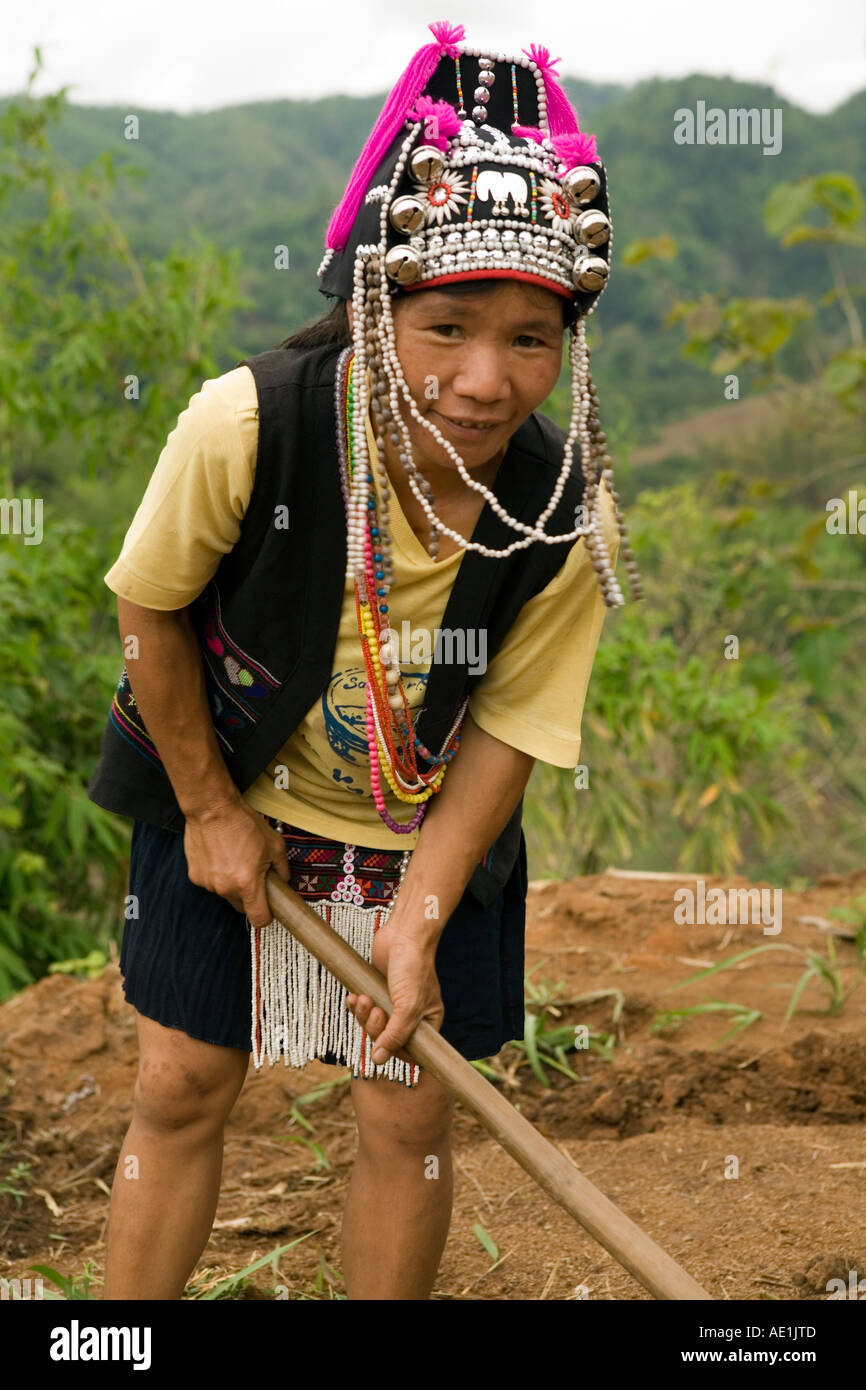Akha people at North Thailand, growing crop.

Image details
Contributor:
Richard van Kesteren / Alamy Stock PhotoImage ID:
AE1JTDFile size:
56 MB (1.7 MB Compressed download)Releases:
Model - no | Property - noDo I need a release?Dimensions:
3611 x 5416 px | 30.6 x 45.9 cm | 12 x 18.1 inches | 300dpiDate taken:
2006Location:
Chiang Rai region, ThailandMore information:
0405010021-3TH150 The Akha are hill tribe of subsistence farmers known for their artistry.[1] The ethnic group may have originated in Mongolia around 1500 years ago. [2] Most of the remaining Akha people are now distributed in small villages among the mountains of China (where they are considered part of the Hani by the government, though this is a subject of some dispute among the Akha themselves), Laos (where they are considered Lao Sung), Myanmar (Burma), and northern Thailand, where they are one of the six main hill tribes. The Akha began arriving in Thailand in the early twentieth century and continue to immigrate, with some 80, 000 now living in Thailand's northern provinces of Chiang Rai and Chiang Mai at high altitudes. Many of these villages can be visited by tourists on trekking tours from either of these cities. They speak Akha, a language in the Loloish (Yi) branch of the Tibeto-Burman family. Akha has a very closely related language with the Lisu and Lahu as they once belonged to the Lolohunter tribe people that once ruled the Paoshan and Teinchung plains before the invasion of Ming Dynasty (A.D 1644) in Yunan, China. The practice of their mythology includes ornately carved village gates made of wood where the guardian spirits are said to dwell. They have en extensive recollection of ancestors going back 15 generations and exhibited in chants. Culture and lifestyle, Elderly Akha woman, NE Thailand The Akha generally live in bamboo houses raised on low wooden stilts in hilly areas. These huts are divided by gender - one side is for the women, and the other side, occupied by the men, is used as a more public area. The Akha subsist through an often destructive form of slash and burn agriculture which can result in elimination of old growth forest, native animal species and serious soil runoff problems. They are expert farmers who focus on mountain rice, corn, and soybeans that are planted in seasonal shifts.